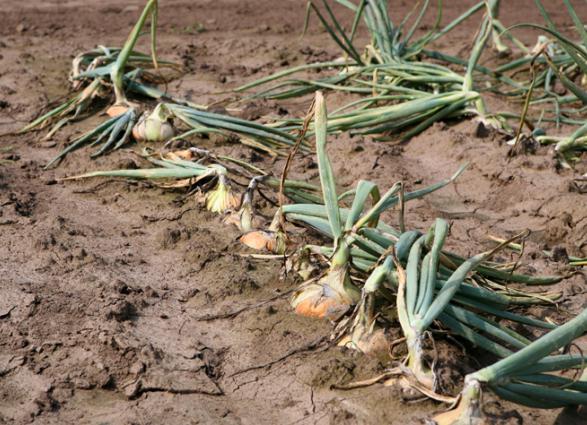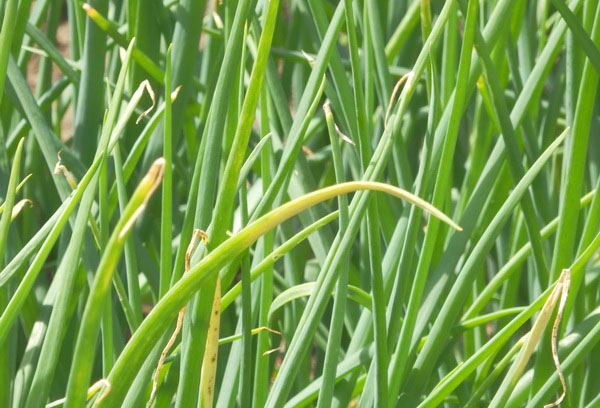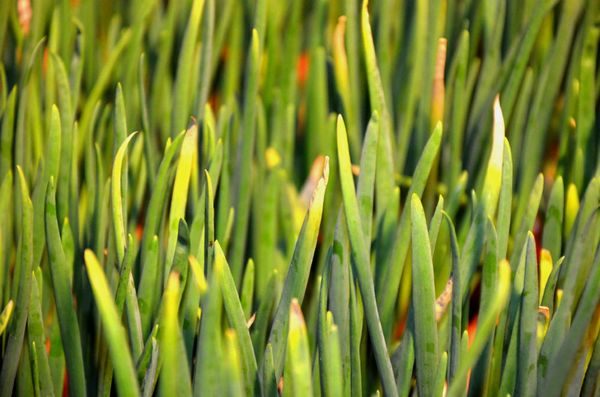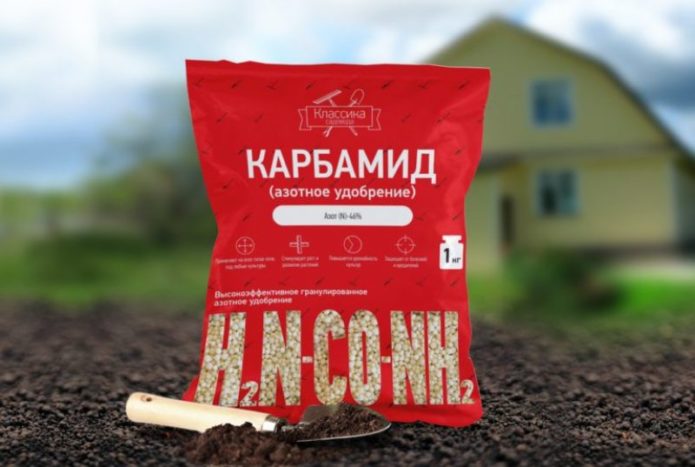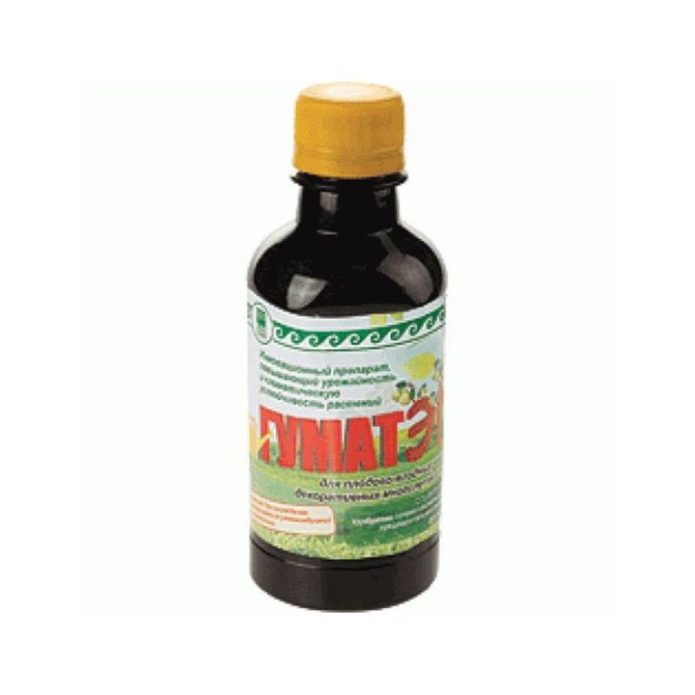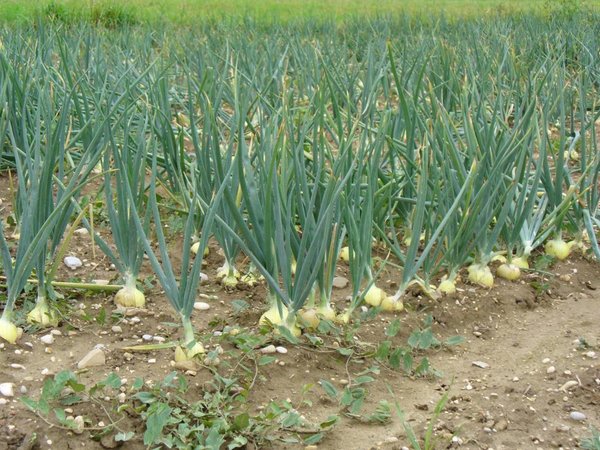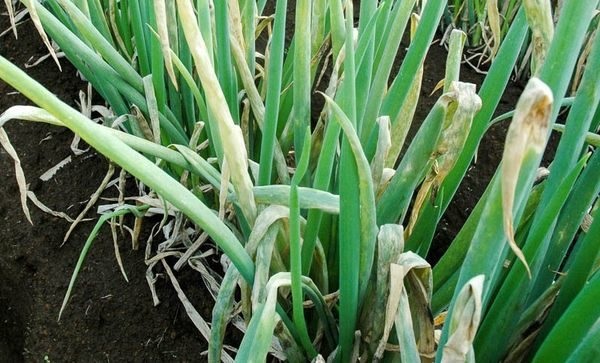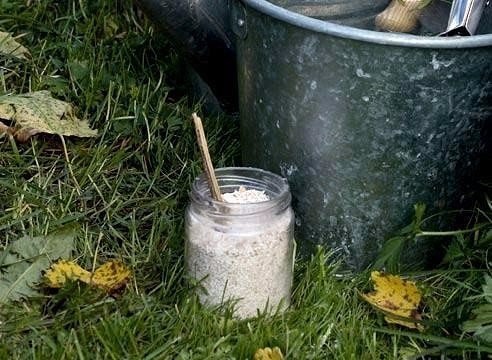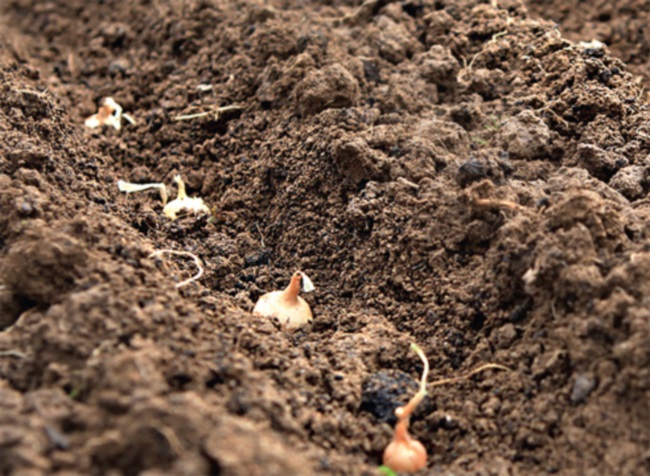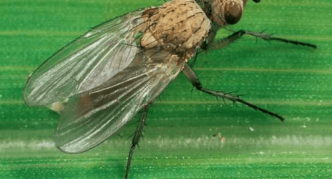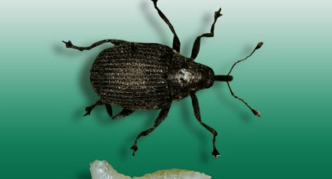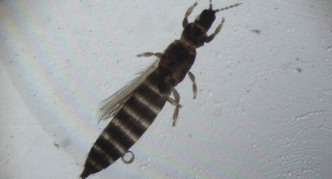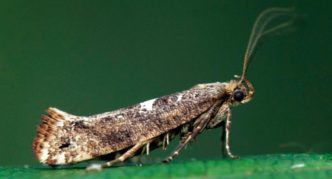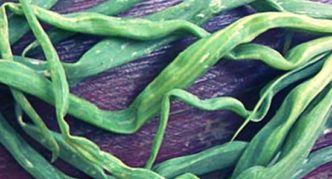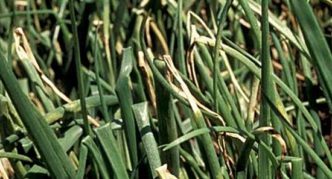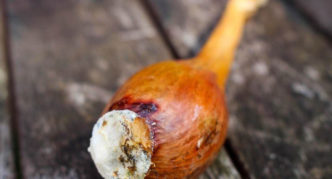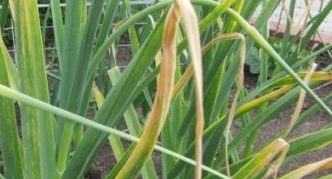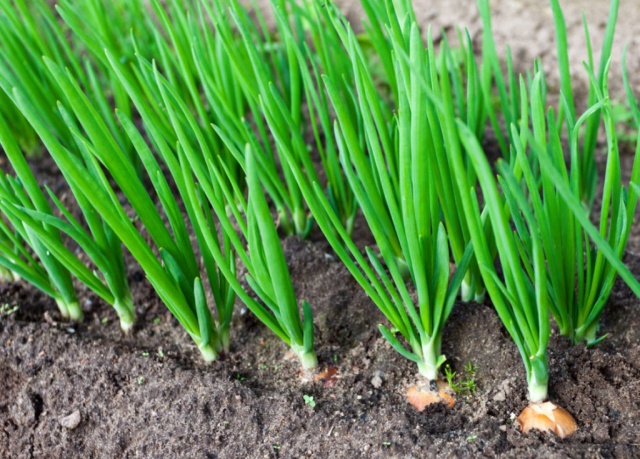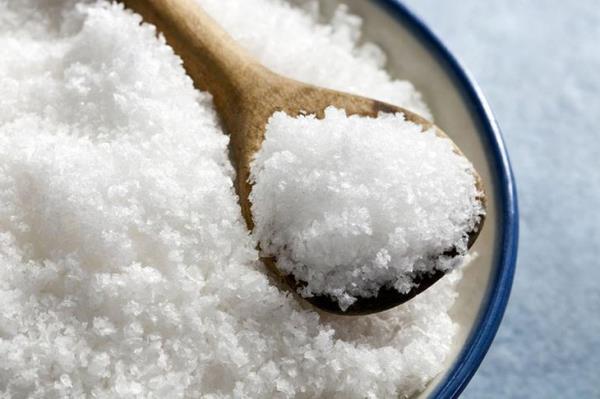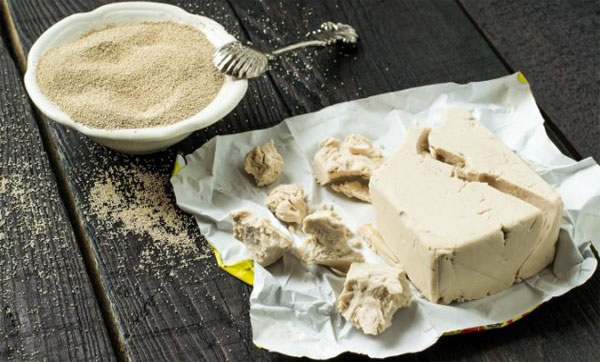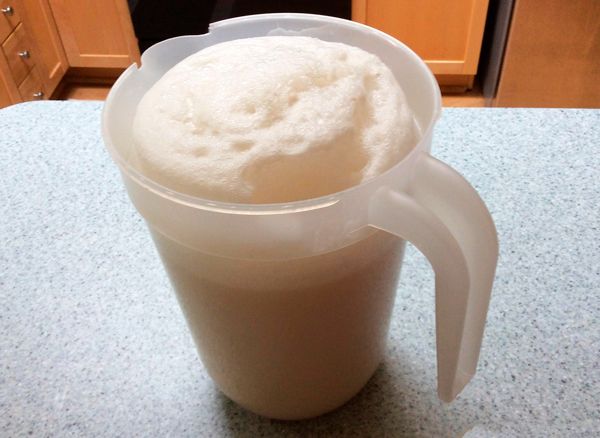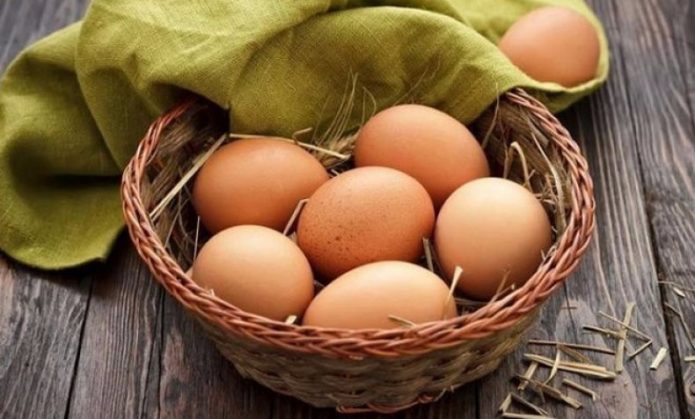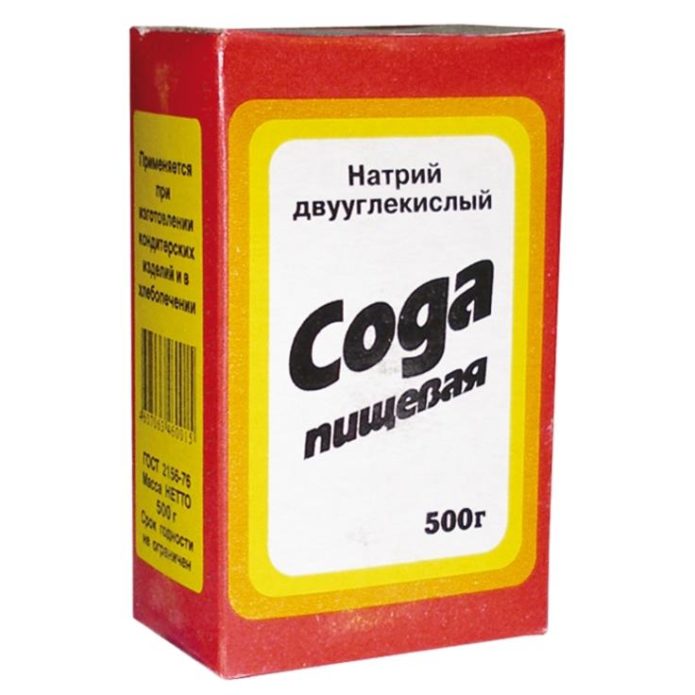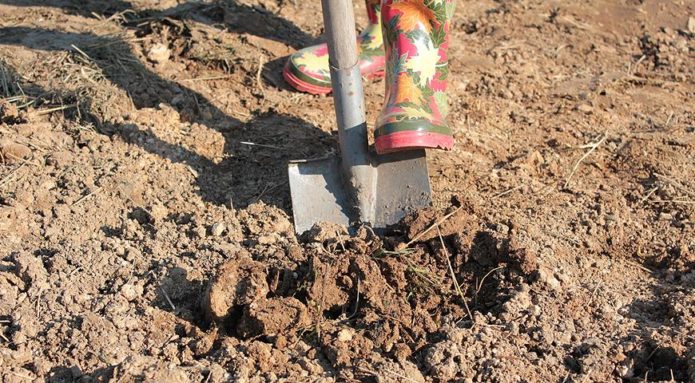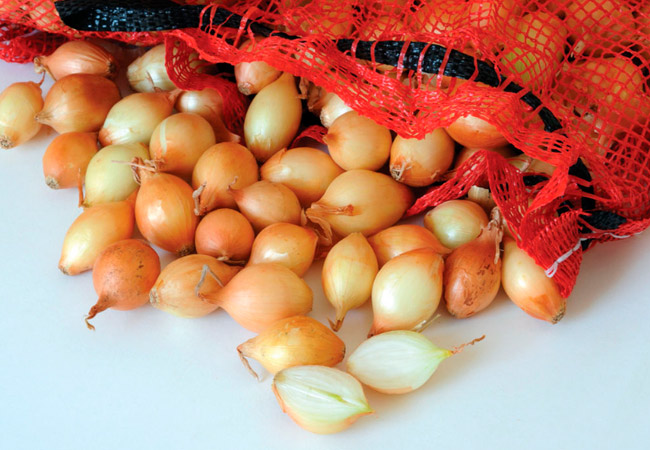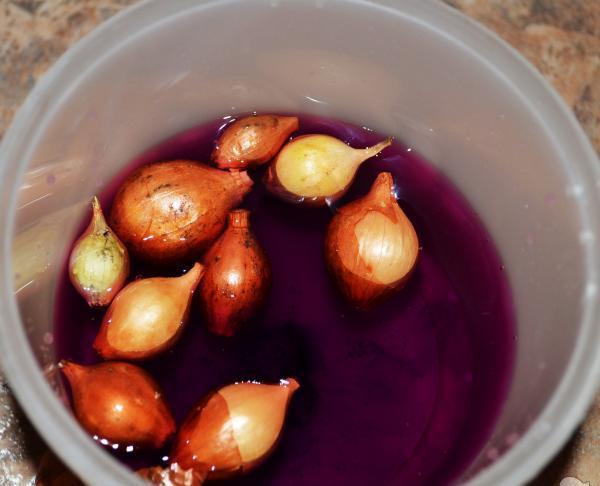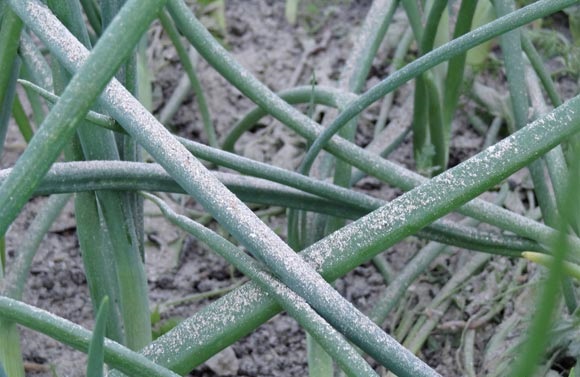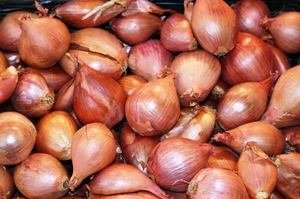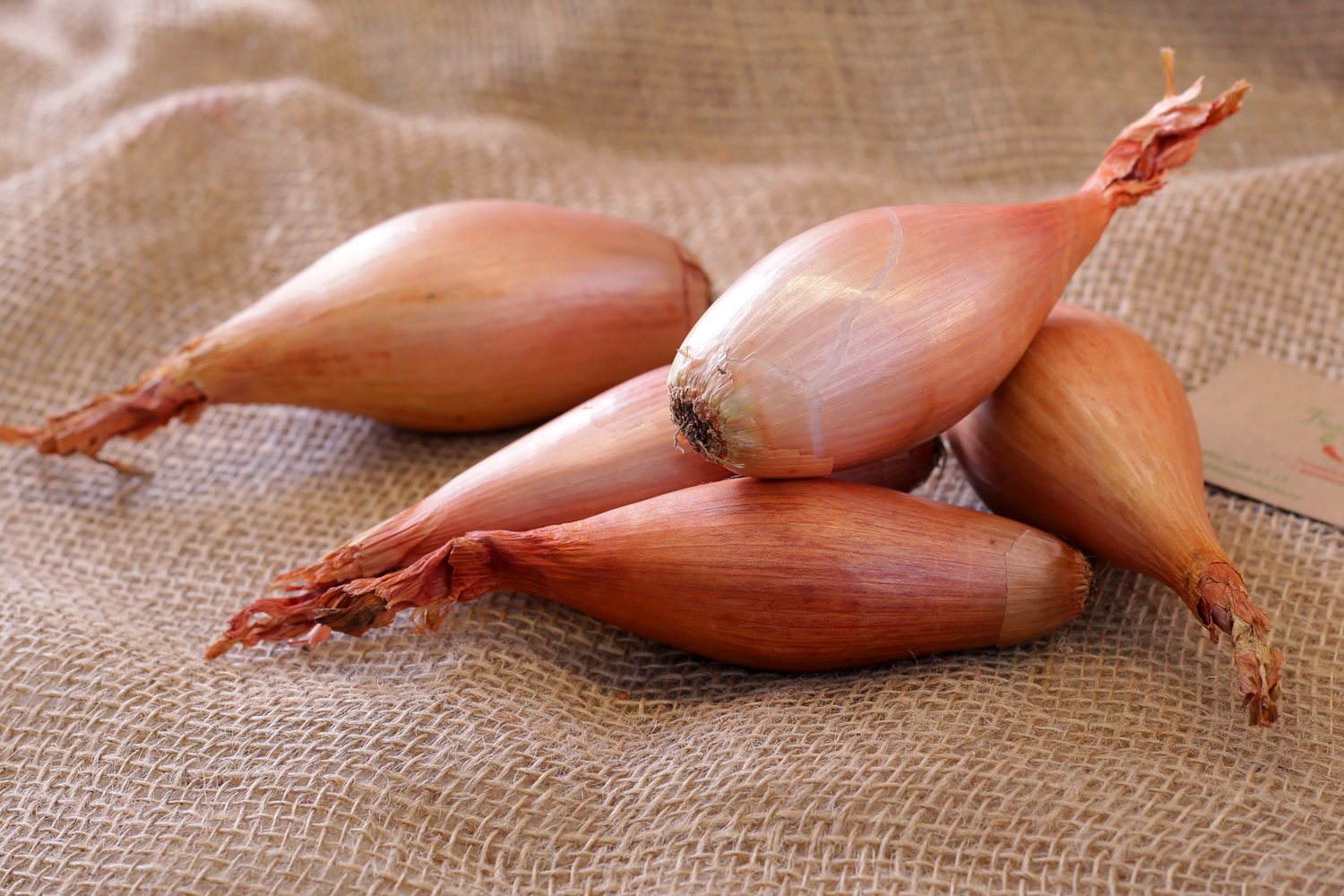Onions are an unpretentious culture. However, sometimes, when growing this vegetable, gardeners are faced with the fact that small light spots appear on green feathers or the tips of the leaves turn yellow. And sometimes the whole onion bed turns completely yellow. To prevent this from happening, it is necessary to carry out a set of preventive measures and observe the rules of agricultural technology.
Content
Yellowing of onion leaves: causes and signs of their manifestation
The change in leaf color at the end of July is a natural process. Withering and yellowing of feathers during this period signals the completion of onion growth. The turnips are already fully formed, and soon it will be possible to harvest.
But the yellowness of the leaves at an earlier date indicates a lack of nutrition or moisture to the plants, uncomfortable growing conditions, damage by diseases or pests.
Lack of moisture
For rooting and further growth, onions must be watered regularly. Deficiency of moisture can cause yellowing of the leaves, as well as drying out of the roots, which can lead to the death of plants. The amount of liquid depends on the growing season. When shoots appear, watering is carried out every 3 days, consuming 6 l / m2. At the next stages of growth, in the absence of rain, it is enough to moisten the plantings 4 times a month. The norm is 10 l / m2. In a wet, rainy summer, the amount of watering should be reduced to avoid stagnant water. They stop moistening the beds only 2 weeks before harvesting.
For irrigation, it is advisable to use settled water heated in the sun. The best time to water is morning or evening so the moisture evaporates more slowly.
In small summer cottages, water is brought under the root from a watering can or into the aisles from a hose, trying not to erode the ground and not expose the bulbs. In large areas, it is more convenient to use a drip irrigation system. Water, automatically supplied through pipes with drippers laid along the onion rows, evenly flows directly to the root system, providing the necessary level of soil moisture.

Drip irrigation of onions allows you to evenly irrigate onion plantings, while water does not fall on the leaves, but goes directly to the root system
Video: onion leaves turn yellow
Malnutrition
Growing in a soil poor in humus, a deficiency of nutrients can also cause yellowing of the feather.
Lack of nitrogen
The lack of nitrogen compounds at the initial stage of development becomes the reason for the slow growth of greenery, which initially brightens and gradually turns yellow.
To compensate for the lack of this nutrient will help the introduction to the beds 2 weeks after germination of the bulb of ammonium nitrate (30 g / m2) or urea (20 g), rich in nitrogen compounds (35% and 46%, respectively). Mineral fertilizers are used in the form of solutions and applied to the soil 2-3 l / m2 or in dry form, sprinkled in the aisles and must be embedded in the soil to a depth of 6 cm. Before and after feeding, irrigate with clean water. Thanks to these fertilizers, the plants grow well and acquire a rich emerald color.
Urea is not very effective in a cold environment; it becomes an active conductor of biologically active substances only in the earth warmed up to + 15 ° C. Therefore, when planting too early or in cold weather, it is better to use ammonium nitrate instead.
The use of organic matter is also effective - mullein, horse manure, bird droppings. The first feeding is carried out when the feather has grown by 10 cm. Manure (1 kg) or bird droppings (500 g) are diluted in a bucket of water and insisted for a week. The slurry is diluted with water 1:10, a solution of chicken manure - 1:20. The aisles of onion plantings (10 l / m2) are poured with a nutrient liquid. The plants are re-nourished after 2-3 weeks.
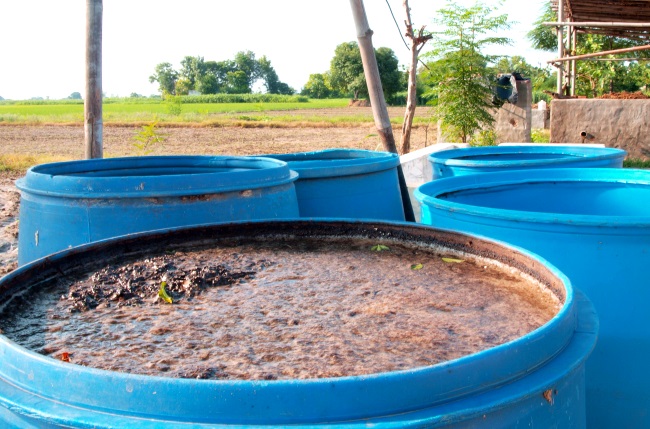
Mullein is a unique fertilizer, because it contains almost all the nutrients necessary for a plant: nitrogen, phosphorus, potassium, calcium, magnesium, zinc.
Agrarians increasingly prefer microbiological fertilizers, which allow them to quickly restore and maintain soil fertility, providing plants with the necessary nutrition. Such preparations as Baikal EM1, Radiance, containing effective strains of microorganisms, displace soil pathogens and multiply beneficial bacteria. The concentrated liquid is diluted in water (1: 1000) and after 6 hours of infusion, root or foliar feeding of green shoots (3 l / m2) is carried out.
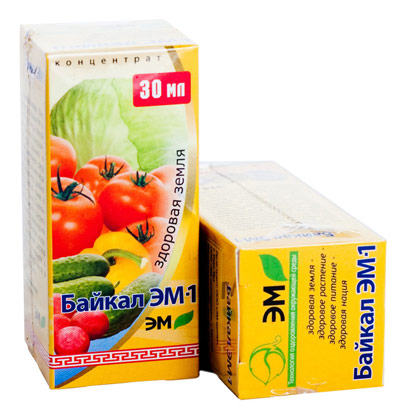
Microbiological fertilizer Baikal EM1 activates the activity of beneficial microflora, thereby providing nutritious nutrition for vegetable crops
Video: how to dilute the drug Baikal M1
Copper deficiency
As a result of the lack of this element, the feather becomes thinner and yellow. Most often this occurs in peat areas. In this case, in warm, windless weather, the soil should be shed with a 0.1% solution of copper oxychloride, a 0.01% solution of copper sulfate.
Lack of potassium
Potash hunger is manifested by curling feathers and lightening their tops. Fertilizing watering with a solution of potassium chloride (40 g / 10 l), potassium salt (20 g / 10 l), wood ash (250 g / 10 l) will help to fill the lack of this element.
Acidic soil
High soil acidity can also cause yellowing of onions. In acidic soil, pathogens actively multiply, metabolic processes of plants are disrupted, and their assimilation of useful substances worsens. For deoxidation, lime (3 tbsp. L.) Or ash (400 g) are used, which are diluted in 10 liters of water and 200 ml are added for each plant.
Unfavorable weather conditions
The condition of plants is greatly influenced by the weather factor. In extreme heat, onion feathers become dry and yellow. To prevent this from happening, it is necessary to regularly water the plants during a drought. With an excess of moisture in a damp summer, the roots begin to rot, the greens wither and gradually turn yellow, a favorable environment for pathogenic bacteria is created. In case of heavy rainfall, a film shelter should be built over the bed, artificially creating a dry climate, and not watering.
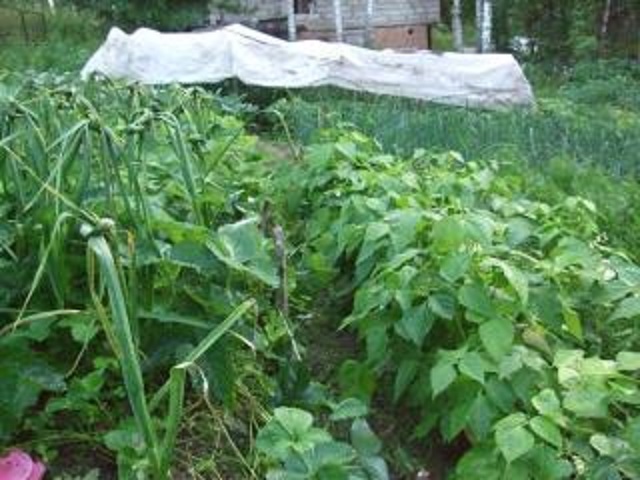
In heavy rains, the bow should be covered with a foil so as not to provoke yellowing of the feather.
Changes in the color of onion leaves also occur as a result of freezing. Under unfavorable temperature conditions (less than + 5 ° C), feathers turn yellow, their tips dry out. In regions with a cold climate, recurrent cold weather is not uncommon in late spring, even in early June frosts occur. Therefore, with the threat of a sharp drop in temperature, onion plantings must be insulated with agrofibre.
Damage to onions by harmful insects
The massive spread of pests can not only cause yellowing of the feather, but also ruin the entire crop.
Table: onion pests
| Pest | Manifestations | Measures |
| Stem nematode | The source of infection is planting material and soil. A white filamentous worm, no more than 1.5 mm long, having penetrated the stems, sucks out their juice. The dried feather becomes wrinkled, deformed and covered with yellowish veins. With significant damage, young seedlings die. | To combat the nematode, a month before the start of sowing, carbamide (100 g / m22), ameliorant percalcite (200 g / m22). |
| Onion fly | The pest hides in the soil and last year's leaves, and becomes more active with the arrival of spring. During the flowering of cherries and dandelions, a harmful insect of yellowish-gray color lays eggs in the ground, on bulbs. A week later, larvae appear from them - white worms that eat away growing bulbs. Plants damaged by an onion fly do not develop well, the leaves lose their elasticity, become yellowish-gray and dry out. The bulbs remain virtually rootless and are easily pulled out of the ground. |
|
| Onion lurker | A small bug about 3 mm long comes out of wintering with the onset of spring and attacks onion shoots. Females gnaw a cavity in the leaves and lay an egg there. The larvae that emerged from them gnaw through the passages in the stems, feeding on the tender pulp. Adults pierce leaves with a proboscis and eat out cavities. As a result of such damage, the tops of the feathers begin to turn yellow, the green shoots twist and dry out. | If this bug appears on the garden bed, it is necessary to treat it with Karbofos (60 g \ 10 l). |
| Tobacco thrips | The insect is so small (0.9 mm long) that it is very difficult to spot it. The pest feeds on plant sap and is a carrier of viral diseases.The fact that onion plantings are affected by thrips can be judged by the leaves, which begin to deteriorate from the tips, gradually turning yellow and dying. The growth of feathers slows down, the bulbs do not increase in size, become wrinkled and become brown in color. | Plants affected by thrips should be sprayed with Confidor solution (1 ml / 10 l). |
| Onion moth | The onion moth appears in onion beds in May. Caterpillars of yellow-green color with brown spots bite into the flesh of leaves and eat away from the inside. The leaves wither and dry up. | Treatment of plants with a Spark solution (1 tab. \ 10 l) will help to cope with the pest. |
Photo gallery: onion pests
- Stem nematode - white filamentous worm about 1.5 mm long
- Externally, the onion fly is very similar to an ordinary fly.
- The females of the onion lurker lay eggs, from which white larvae emerge
- Tobacco thrips is a tiny insect that does great harm to onion plantings
- The onion moth is a nondescript butterfly with a dark brown body 8 mm long
Video: onion fly super remedy
Fungal and biological diseases
Diseases of onions often cause yellow feathers. Therefore, the main task of the gardener is to prevent the spread of viruses and infections.
Table: onion diseases causing yellowing of the feather
| Diseases | Symptoms | Treatment |
| Onion mosaic | The causative agent of the disease is viruses that infect leaves and inflorescences. On feathers, the disease manifests itself in the form of yellowish stripes. The leaves become corrugated and lie down. The plant stops growing and dies quickly. |
|
| Downy mildew | Spores of the fungus are spread by wind, water droplets. Onion plantings are especially susceptible to the disease in regions with a humid climate or with heavy rains in the first half of the growing season and cool weather (no more than +15 degrees). The leaf mass in diseased plants grows slowly, the feathers turn yellow, wither and dry out. From the leaves, the disease spreads to the bulbs, which leads to a poor yield quality. | At the first signs of the disease, it is necessary to stop watering and treat the beds with Oxychoma solutions (20 g / 10 l), 0.3% copper oxychloride suspension (30 g per 10 l of water). |
| Fusarium | The pathogen multiplies actively in dry soil with low acidity. The source of infection is plant debris and infected seedlings. The tops of young shoots turn yellow, gradually all the greens turn yellow and die off. White bloom and rot form on the bulbs. Plants wither and die. | You can try to save the crop by treating the plantings with 1% Bordeaux liquid. |
| Rust | The disease causes a deterioration in the presentation of green onions and a decrease in the preservation of the bulbs. On the leaves of plants affected by the fungus, yellow rounded spots are formed. Feathers dry up and die off. Rust spreads quickly in too dense, poorly ventilated plantings. Therefore, you should not plant too densely. | Twice a season, with an interval of 7 days, sprinkle the onion with a solution of copper oxychloride (30 g \ 10 l) with the addition of liquid soap (30 g), a solution of Furacilin (10 tablets \ 1 l). |
Photo gallery: symptoms of onion diseases
- The main feature of the mosaic is corrugated leaves with characteristic yellow transverse stripes.
- When downy mildew is affected, feathers turn yellow and dry out
- Fusarium can be identified by a white bloom on the bottom of the bulb.
- Rusty leaves develop yellow spots
How to process and feed onions so that they do not turn yellow
To grow feathers in a juicy, rich green color, experienced gardeners use folk remedies that help not only saturate plants with useful substances, but also prevent the massive spread of parasites and pathogens that lead to yellowing of onions.
Ammonium is a source of nitrogen
Gardeners use ammonia as a source of nitrogen compounds that plants need so much. Tender onion sprouts at a week of age are sprayed with an ammonia solution (25 ml \ 5 l), again after 7 days.
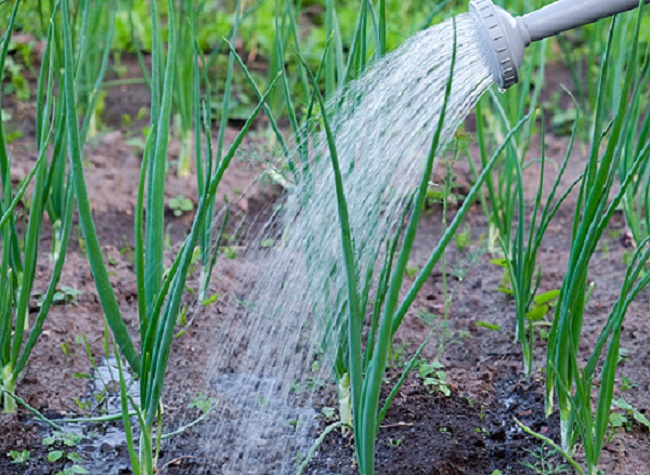
At the beginning of the growing season, 2 sprays of young onion plantings with a solution of ammonia are carried out
If the leaves grow slowly, begin to turn yellow, it is necessary to water the onion plantings with a solution of ammonia daily (15 ml of a 25% solution \ 1 l of water), introducing liquid under the root. Fertilizing watering is carried out in the morning or in the evening until the greens acquire a rich green color.
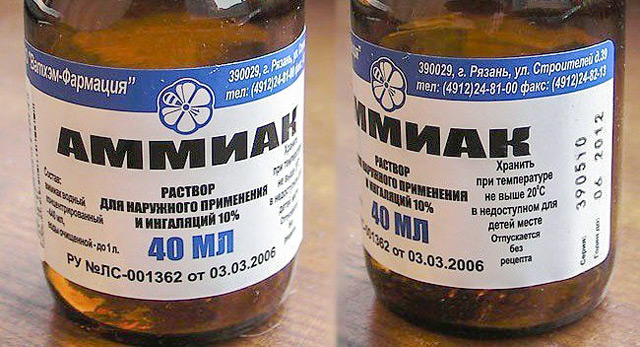
A solution of ammonia added to the water during watering will help restore the bright color of greenery
Using hydrogen peroxide to process onions
Another pharmacy remedy is also useful in the garden - hydrogen peroxide. It has been used for many years in the cultivation of crops, including onions. Peroxide kills pathogenic microorganisms, saturates the soil with oxygen, has a stimulating effect on plant growth, and strengthens their immunity. In such a disinfectant solution (30 drops of 3% peroxide \ 200 ml of water), the planting material is soaked, used for irrigation (2 tbsp. L. 3% peroxide \ 1 l of water). It is enough to add the solution to the soil once a week so that a healthy onion with a juicy green feather and a large onion grows in the garden.
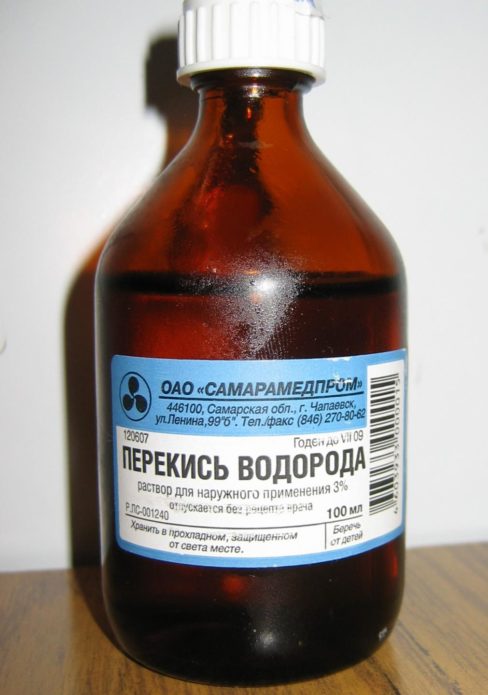
Hydrogen peroxide activates beneficial microorganisms, aerates the soil and protects against pathogens
Video: hydrogen peroxide is a super fertilizer for plants!
Salt dressing for onions
Table salt is also used in onion beds. Sodium chloride is an excellent growth stimulator for plants and improves their absorption of nutrients. In addition, with the help of a saline solution (100 g / 5 l), it is possible to prevent the development of diseases and the massive spread of harmful insects. The use of such a solution from an onion fly is especially effective.
The liquid should be used carefully, introducing it into the grooves at a distance of 8 cm from the roots, trying not to wet the leaves. The first feeding with salt is carried out in the spring, when the young greens grow up to 10 cm. After 14 days, the feeding is repeated. The saline solution is applied only to wet soil and, after absorption, it is imperative that it be watered again with clean water. In order not to cause salinity in the soil, the required concentration should be observed and at the end of the season, more humus should be added to the site for digging.
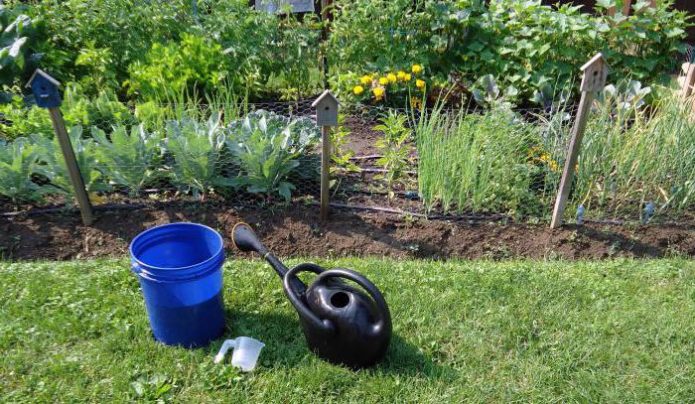
The saline solution should be applied under the root of the onion, being careful not to get on the leaves.
Video: ammonia + salt + potassium permanganate = super remedy for disease and pests of onions
Yeast feeding
Yeast is an effective top dressing for garden crops. They are 65% protein, also contain minerals, amino acids. The yeast solution introduced into the soil contributes to the improvement of microflora, activates root formation, as a result, the greens develop healthy.
For the fermentation of yeast, heat is needed, they begin to work only when heated to 200With soil. Approximately 15 days after onion germination, with the onset of stable heat, the first feeding is carried out. For onions, 2-3 such fertilizing watering is enough per season. And since during the fermentation process there is an intense absorption of potassium and calcium, so as not to deplete the soil with these elements, ash is added to the leaven (1 glass / m2).
You can prepare a nutrient solution from fresh and dry yeast.
- Fresh yeast is shaken in warm water (10: 5), left to ferment for an hour, then diluted with water (50 l).
- 10 g of dry yeast, 60 g of sugar and 200 g of ash are dissolved in warm water (10 l) and infused for 2-3 hours. Before watering, the nutrient liquid is added to the water in a ratio of 1: 5.
Video: yeast as fertilizer
The use of eggshells for feeding onions
Green fertilizer for onions
At the beginning of growth, it is useful to water the onion with herbal infusion to replenish nitrogen. Fertilizer is prepared from nettle, comfrey, dandelion. Chopped herbs (1 kg) are placed in a barrel and infused in 10 liters of water for a week. The resulting infusion is filtered and diluted with water (1:10).
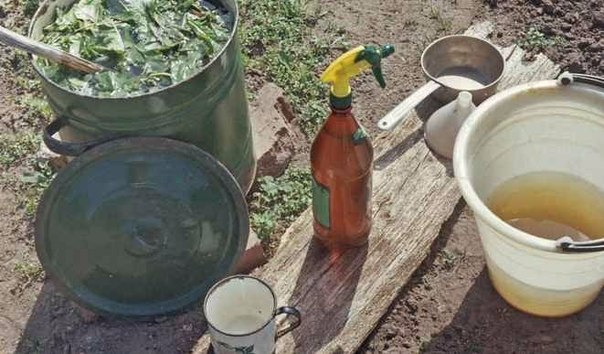
Green fertilizer is rich in nitrogen compounds, therefore it is used only in the first half of onion growing season
Processing onions with soda solution
Baking soda is often used by gardeners when onion feathers turn yellow. Soda solution is especially effective against powdery mildew, leading to leaf chlorosis. For watering 1 tbsp. a spoonful of soda is diluted in a bucket of water or a more complex composition is prepared from 500 g of soda, 10 g of potassium permanganate, 10 ml of iodine and 10 liters of water.
Measures to prevent yellowing of onion feathers
To avoid yellowing of onion feathers and get a good harvest, it is necessary to take preventive measures in a timely manner. And they should begin to be carried out already at the stage of preparing the beds and seed for planting.
- In the fall, remove plant residues from the site, dig up shovels on a bayonet without breaking clods - this will freeze out more pests wintering in the soil.
- Do not grow onions in one place all the time. It is better to choose cereals, zucchini, cucumbers, pumpkin as predecessors.
- To disinfect the soil in the spring, treat it with a solution of copper sulfate (1 tbsp. L \ 10 l).
- Carefully revise the sevok before planting, reject bulbs with signs of disease.
- Disinfect the planting material in a solution of Trichodermina (30 g \ 3 l), manganese, hydrogen peroxide, saline solution, or subject it to hydrothermal treatment, first holding it in hot water (+ 50 ° C) for 2 minutes, and then immersing it in cold water for a minute.
- During the season, be sure to loosen the soil to get rid of the insect pupae.
- When planting, add Pochin, Bazudin, Zemlin (1 g / m2) to the soil to protect against onion flies, onion ticks, nematodes. Or powder the vegetable beds with a mixture of ash (200 g) with the addition of 1 g of hot pepper and tobacco dust.
- Before the onion fly begins, the beds with onions must be sprayed with infusion of fir, wormwood, mint or tansy. The strong smell of these plants will scare away the pest.
- When onion flies and moths fly out, spray the plantings with a solution of Metronidazole (4 tablets \ 10 l).
- To prevent bacterial rot, rust, treat the vegetable garden with a Homa solution (40 g \ 10 l) with the addition of 1 tbsp. l. soap. Liquid consumption - 3 liters per m2.
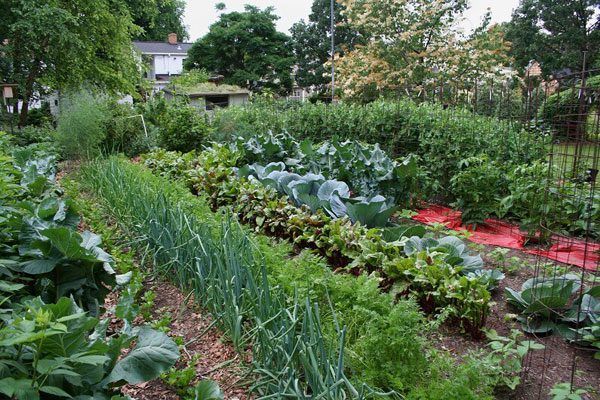
Onions and carrots not only get along well in the garden, but also stimulate the growth and development of each other.
Even an inexperienced summer resident can get a good harvest of fresh onion greens and a strong turnip. But if, as a result of adverse weather conditions, disease or pests, onion feathers begin to turn yellow, it is necessary to take timely measures and use the entire arsenal of protective equipment to eliminate the problem.
